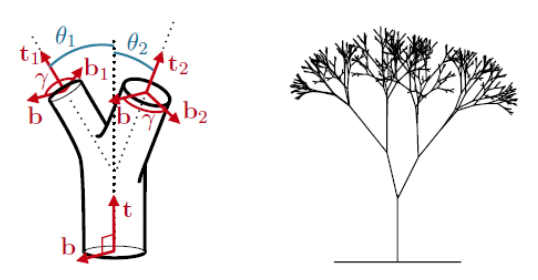Leonardo da Vinci was well known during the renaissance for his radical thinking, inventions, art, and more. He can be best described as the jack of all trades. While we are well accustomed to his more famous discoveries, did you know about his theory on trees?
According to Leonardo da Vinci, when you put together all the branches of a tree at every stage of its height, they will be equivalent to the thickness of its trunk. This was then proven correct in 2011 when studies on wind resistance were done.
What Exactly Was Da Vinci’s Theory on Trees?
Leonardo Da Vinci first observed the branch growth pattern about 500 years ago. Whenever trees lose their leaves during autumn, we would often see their internal structure beyond the foliage.
Da Vinci’s theory is simple, the size of the tree trunk and its branches gathered together would be of equal sizes. However, this was not merely an observation; there is an actual mathematical relationship between the branches and the trunk.
All the branches of a tree at every stage of its height when put together are equal in thickness to the trunk
Leonardo Da Vinci

Image Courtesy of Christophe Eloy of the University of Provence
(Source: Inside Science)
How Does His Theory Affect Today’s World?
You might be wondering what does this theory has to do with our world today. After all, it has been 500 years. So why is it of the essence now?
Da Vinci’s study has been revived because of another recent study that has surfaced in 2011. The paper suggests that the main reason why trees grow this way is that they are protecting themselves against strong winds and the damage they may cause.
Leonardo’s rule is an amazing thing. Until recently, people really haven’t tested it.
Kate McCulloh, Oregon State University – Plant Physiology
To verify if there is any truth to his theory, Christophe Eloy, a physicist from the University of Provence in France, investigated further by using a computer program to replicate the design of the tree’s branching. (Source: Inside Science)
How Did Christophe Eloy’s Study Turn Out?
Eloy started his study with a fractal tree skeleton. Smaller versions of the branches were repeatedly added to create the virtual tree on his program. Each branch was said to take after the branch it stemmed from. This mimicked the fractal nature of trees as we know it. The virtual model served as a basis for determining the thickness of each branch.
By the time the skeleton phase was over, Eloy had tested the structure using a virtual wind tunnel. By applying several forces of wind needed to break the branches, he determined the diameter of each that had a rare chance of snapping.
While his experiment seems to have proven Da Vinci’s theory, some scientists still believe that there is more to the theory than the results of Eloy’s research.
I do not doubt that the tree structure is the outcome of a combination of hydraulics and structural constraints. However, I don’t think the hydrological argument should be dismissed so easily.
Gil Bohrer
(Source: Inside Science)
